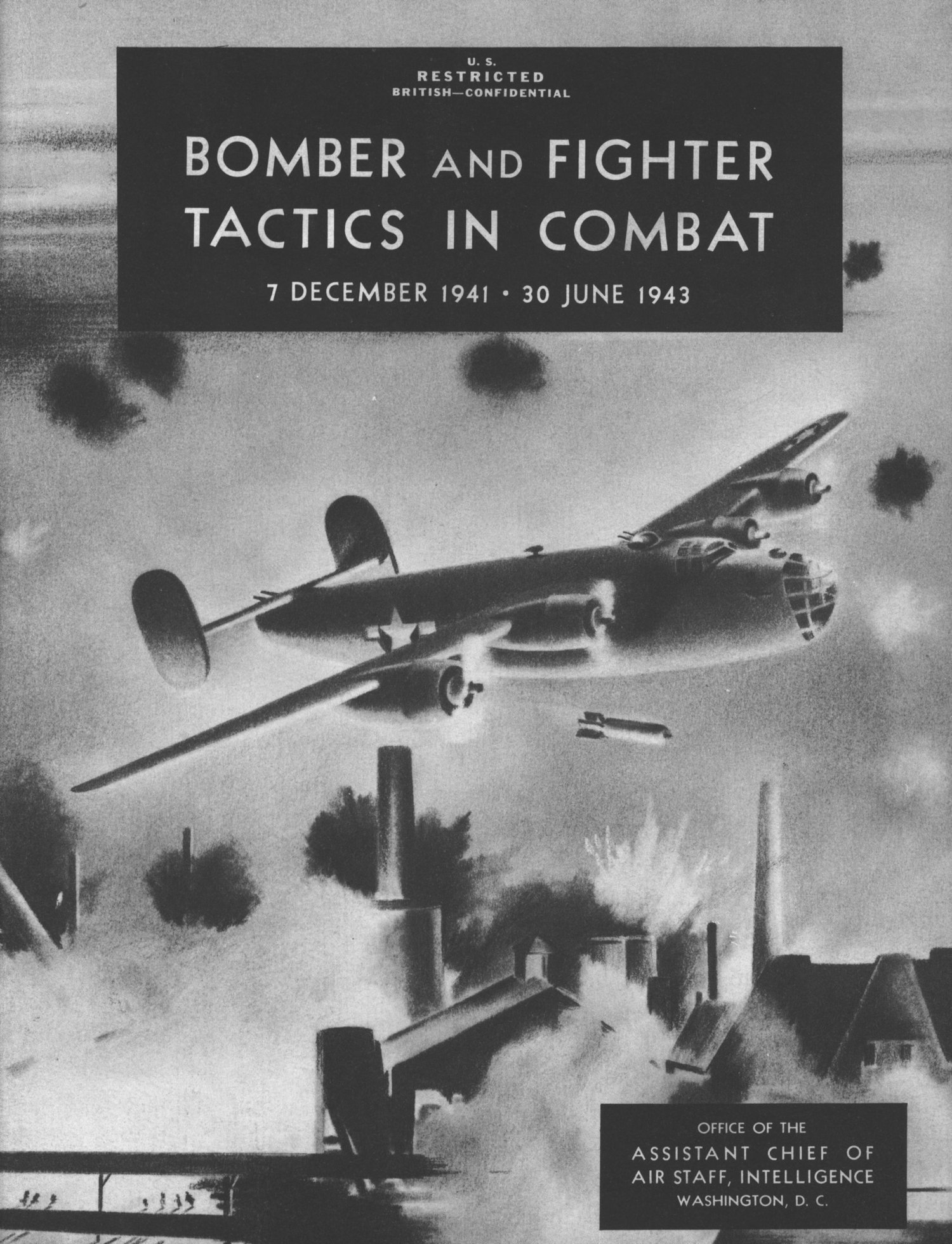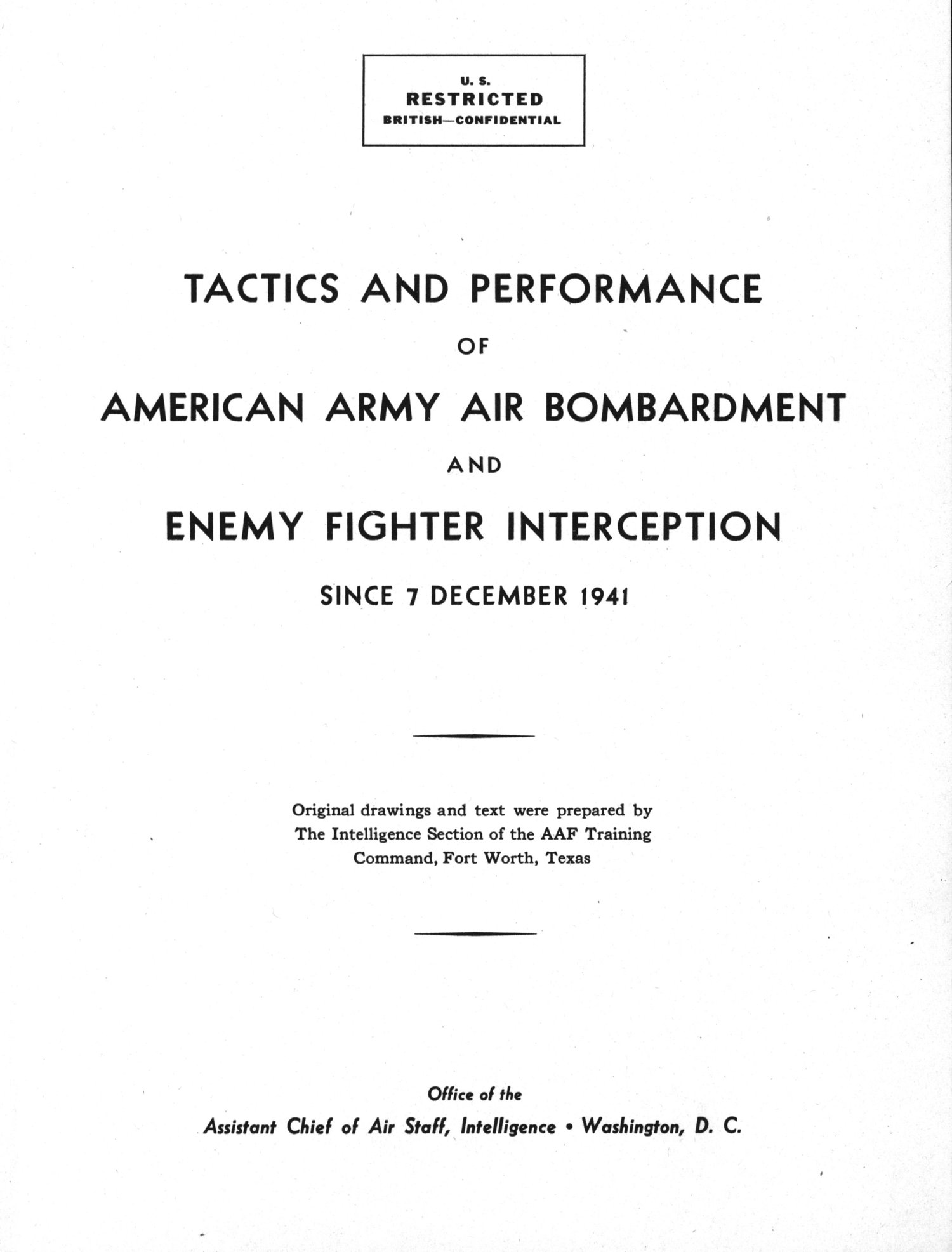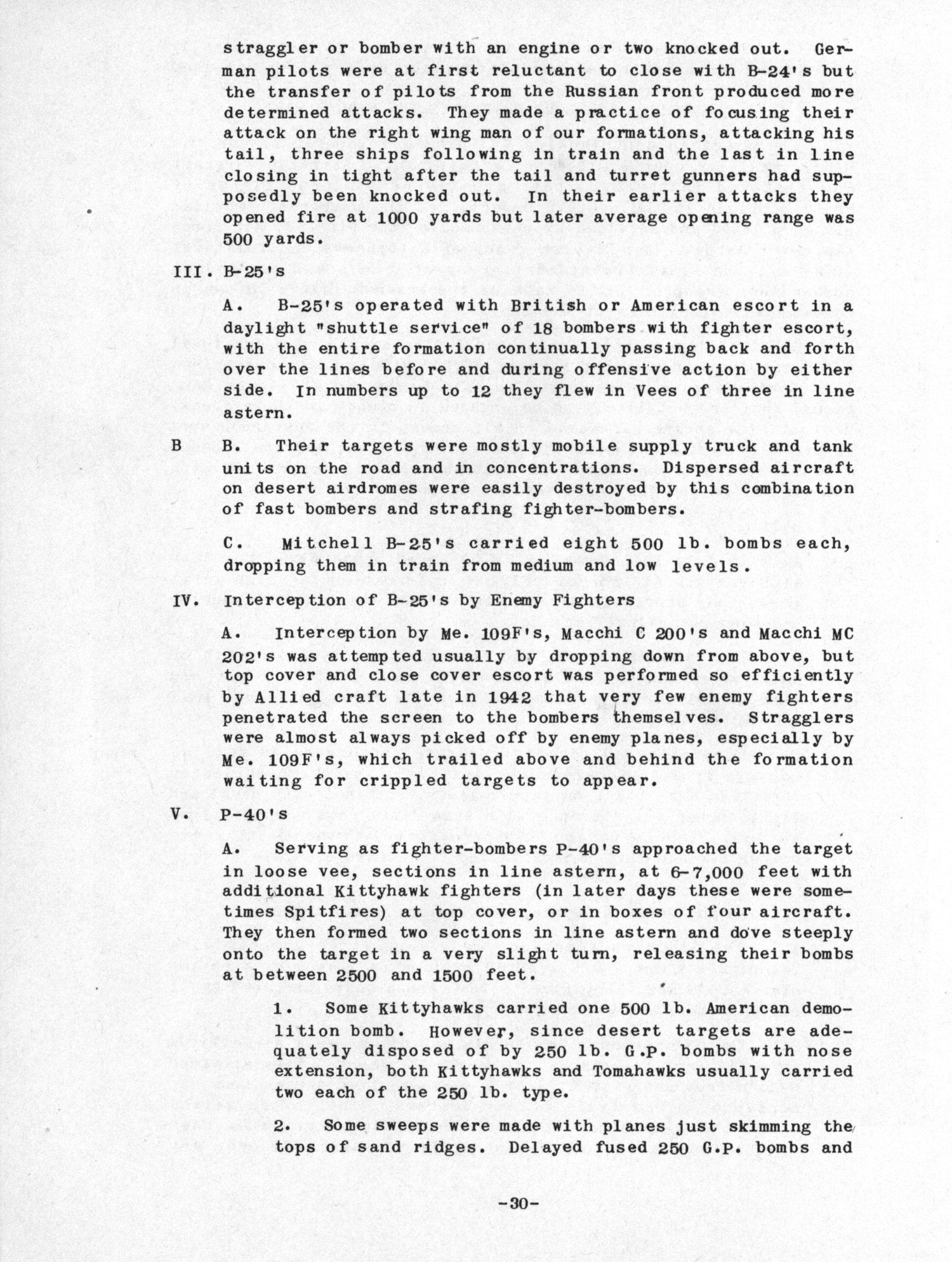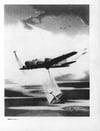Bomber and Fighter Tactics in Combat, 7 December 1941-30 June 1943
Bomber and Fighter Tactics in Combat, 7 December 1941-30 June 1943
(Tactics and Performance of American Army Air Bombardment and Enemy Fighter Interception Since 7 December 1941)
Office of the Assistant Chief of Air Staff, Intelligence, Washington, D.C., 1943
Original drawings and text were prepared by The Intelligence Section of the AAF Training
Command, Fort Worth, Texas
The American Army Air Forces are engaged in an expanding program of precision bombing of numerous types of enemy targets, largely by daylight sorties. A review of pre-war development of American air power as well as of the Industrial and military possibilities of our country reveal the logic of such a program. Pre-Pearl Harbor air strategy for the United States stressed the need for large bombers operating with precision bomb sights as long-range protection for our shores and island possessions. Our industrial, manpower, material and technical resources make large-scale production of heavy bombers possible in numbers many times greater than any other country. Pre-war Britain specialized in fighter materiel and training with glorious results at Dunkirk and in the Battle of Britain. Her heavy bombers had to be developed in a great hurry after the war began. Lacking equipment, specifically designed for effective daylight sorties against swarms of German fighters, she has naturally sought the darkness of night as protection for her large bombers, with area bombing on a rather large scale resulting. America, on the other hand, has followed the policy of daylight precision bombing. Thus, the British with their night area bombing and the United States Army Air Forces using daylight precision methods are engaged in relentless, round the clock missions against Germany's strategic targets.
Radio and press dispatches, human interest write-ups in periodicals, movie scenarios, and even commercial advertising nave all helped to center attention on our bombers, especially the big ones. In addition to public interest, all branches and levels of our air force personnel have shown a lively enthusiasm and curiosity in our bombers. Custodians at Intelligence Libraries and War Rooms of the various stations where air crews and ground crews are in training report that both students and officer readers alike ask to "see something on our B-17's, our B-24's, or on how the Jap Zeros and German FW-190's 'come in' on our bombers”. They also want to see copies of combat intelligence narratives which describe the terrific power of twin .50 cal. guns when they bite into the "yellow-noses and Zeros" which fly across the gunners' sights at 7 o'clock, or 5 o'clock or 11 o'clock.
The following account is an attempt to show, pointedly, and briefly on the basis of excerpts from Intelligence reports, just how American Army bombardment training, tactics and materiel have stood up and progressed in combat with Jap and German Fighters to date. In the early months of the war our air forces were fighting in the Pacific areas only. Since mid-summer 1942 they have been operating in many areas on an ever-expanding scale. This narrative will attempt to show events as they happened, first things first.
Contents
- Background of Army Air Bombardment
- Early Days in the Southwest Pacific
- Army Air Bombardment in Coral Sea and Midway Battles
- The Southwest Pacific Since July 1942
- Army Air Bombardment in the Aleutians (June 1942 to May 1943)
- The Battle of the Bismarck Sea (2-4 March 1943)
- Bombardment Operations in China
- Air Bombardment in Burma
- American Air Bombardment in the Middle East
- American Air Bombardment in North Africa
- VIII AAF Bomber Command in European Theater of Operations
- Conclusion
48 pages
7 illustrations












